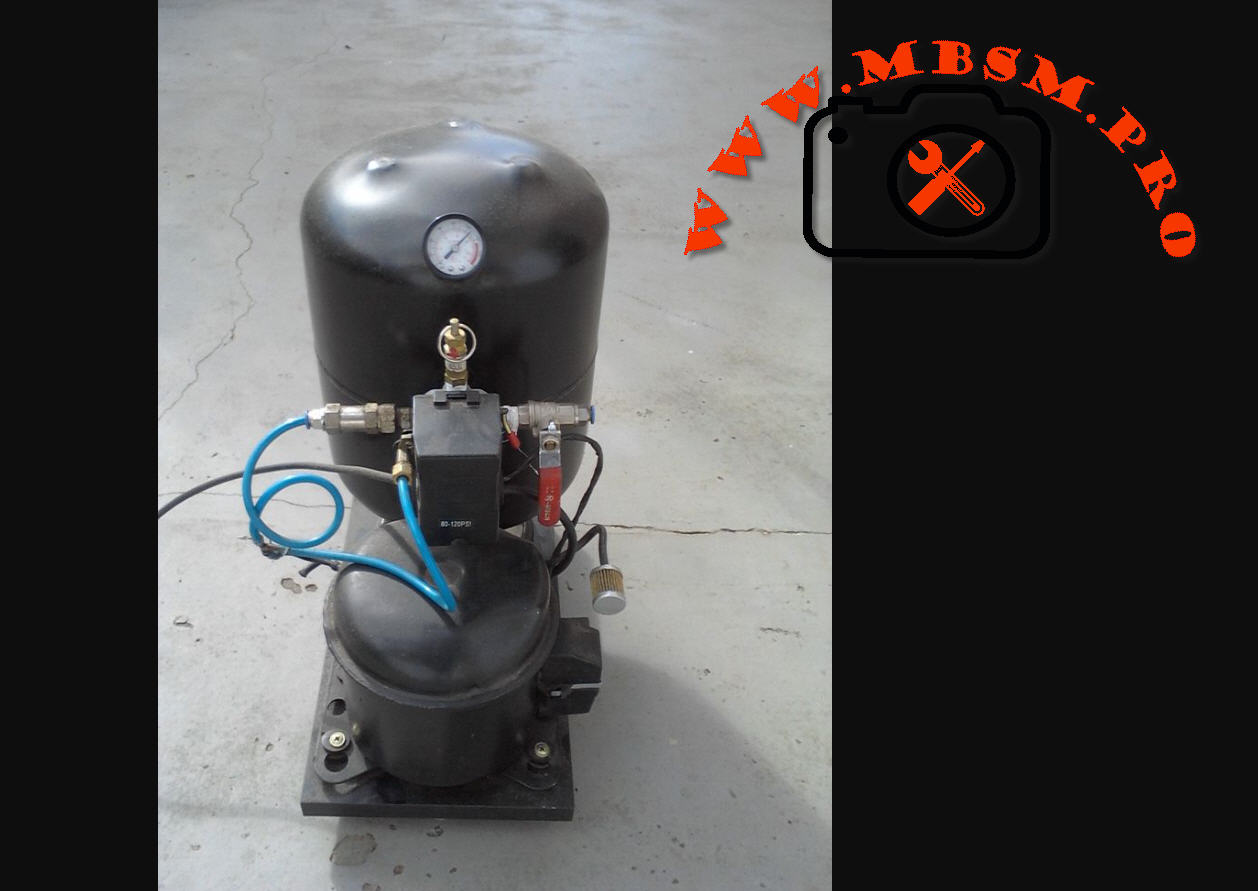Homemade Compressor Using a Refrigerator Motor and Gas Cylinder
To build a homemade compressor using a refrigerator motor and a gas cylinder, you can follow a relatively simple process, which is described in various videos and tutorials available online. Below are the main steps, materials needed, and essential safety precautions for this construction.
Necessary Materials
- Refrigerator Motor or Air Conditioner
- Gas Refrigerant Cylinder (preferably R410A)
- Pneumatic Hose
- Clamps
- Electrical Wires
- Connections for the Cylinder
- Check Valve (optional but recommended)
Necessary Tools
- Pliers
- Screwdriver
- Soldering Iron (for connections)
- Multimeter (for electrical testing)
Step-by-Step Instructions
- Disassemble the Motor: Remove the motor from the refrigerator, ensuring that all wires are disconnected. It’s important to check if the motor is in good condition before using it.
- Prepare the Cylinder: The cylinder should be cleaned and prepared to receive the connections. Make appropriate holes for the hoses and install the necessary connections.
- Assemble the Connections: Connect the pneumatic hose to the cylinder and the motor. Use clamps to ensure that the connections are tight and do not leak air.
- Electrical Installation: Connect the electrical wires to the motor, making sure to follow instructions on how to wire the motor without a relay, if necessary. A multimeter can be useful to check for continuity in the connections.
- Test the Compressor: After assembly, perform a test to check if the compressor is functioning correctly. Monitor the pressure in the cylinder and check for any leaks.
- Finalization: After testing, finalize the assembly by organizing the wires and securing the cylinder on a stable base if necessary.
Safety Considerations
General Safety
- Personal Protective Equipment (PPE): Always wear safety goggles, gloves, and ear protection when working with tools and machinery.
Electrical Safety
- Disconnect Power: Ensure that all electrical power is disconnected before working on any wiring.
- Check Connections: Use a multimeter to verify that there are no short circuits before powering on the motor.
Handling Gas Cylinders
- Proper Ventilation: Work in a well-ventilated area when handling refrigerant gases to avoid inhalation of harmful fumes.
- Avoid Leaks: Regularly check all connections for leaks. If you detect any refrigerant leak, stop work immediately and ventilate the area.
Pressure Safety
- Pressure Relief: Make sure that there is a pressure relief valve installed on your system to prevent overpressure situations.
- Do Not Exceed Rated Pressure: Always operate within the manufacturer’s recommended pressure limits for both the motor and gas cylinder.
Emergency Preparedness
- Know Emergency Procedures: Be aware of what to do in case of an electrical shock or gas leak.
- Fire Extinguisher: Keep a fire extinguisher nearby when working with flammable materials or gases.
Final Considerations
A compressor made with a refrigerator motor can be very useful for various applications, such as painting, inflating tires, and other uses that require compressed air. It’s a great way to recycle materials and create a practical tool for your workshop or home.Always remember to take safety precautions when working with electricity and high pressures, especially when handling gas refrigerant cylinders. Your safety should always be your top priority!

| Attachment | Type | Link |
|---|---|---|
| Mbsm-tn-private-media_buld compressor | image/jpeg | Get Link |




